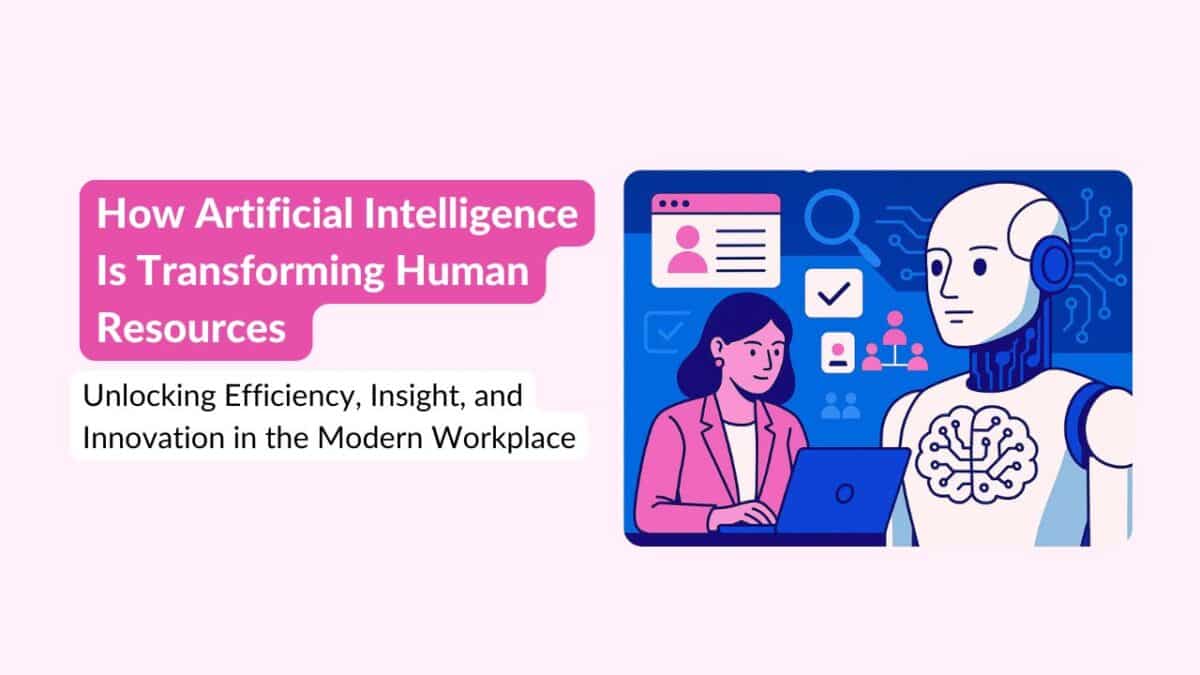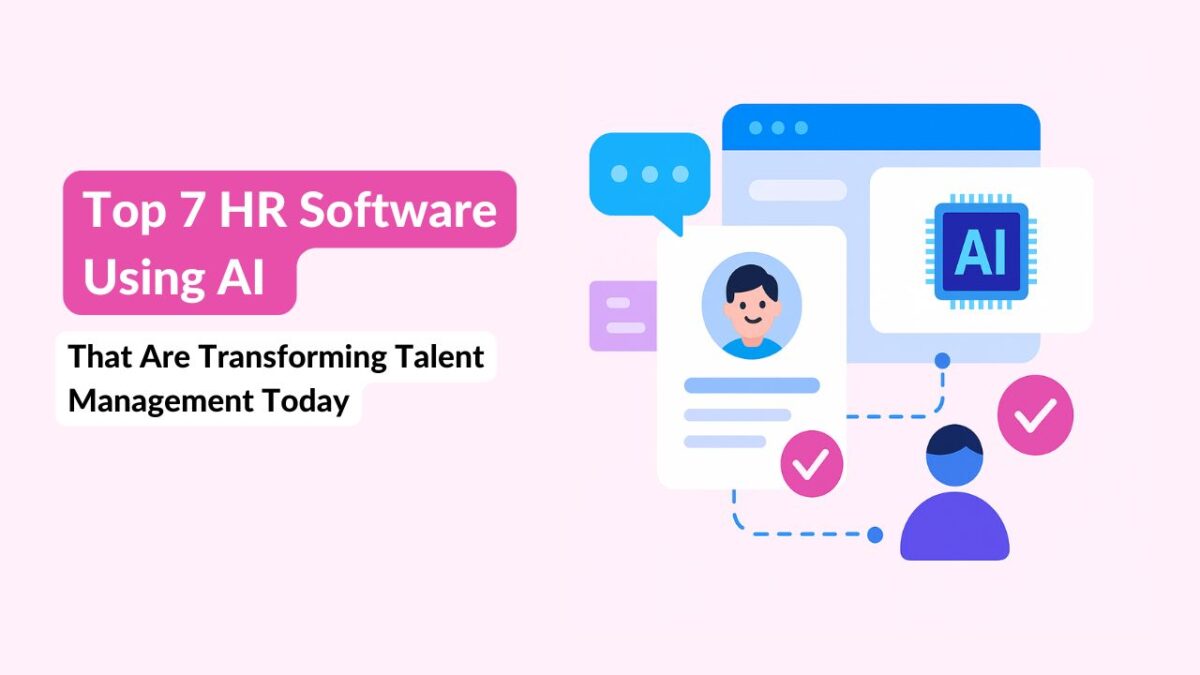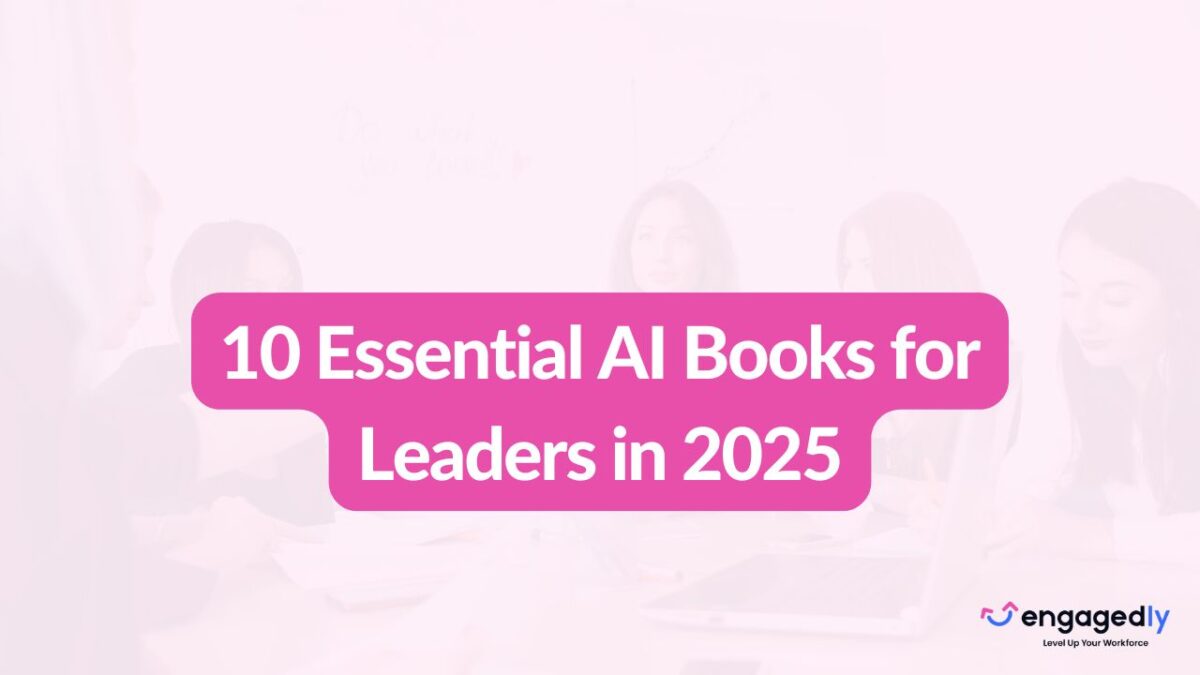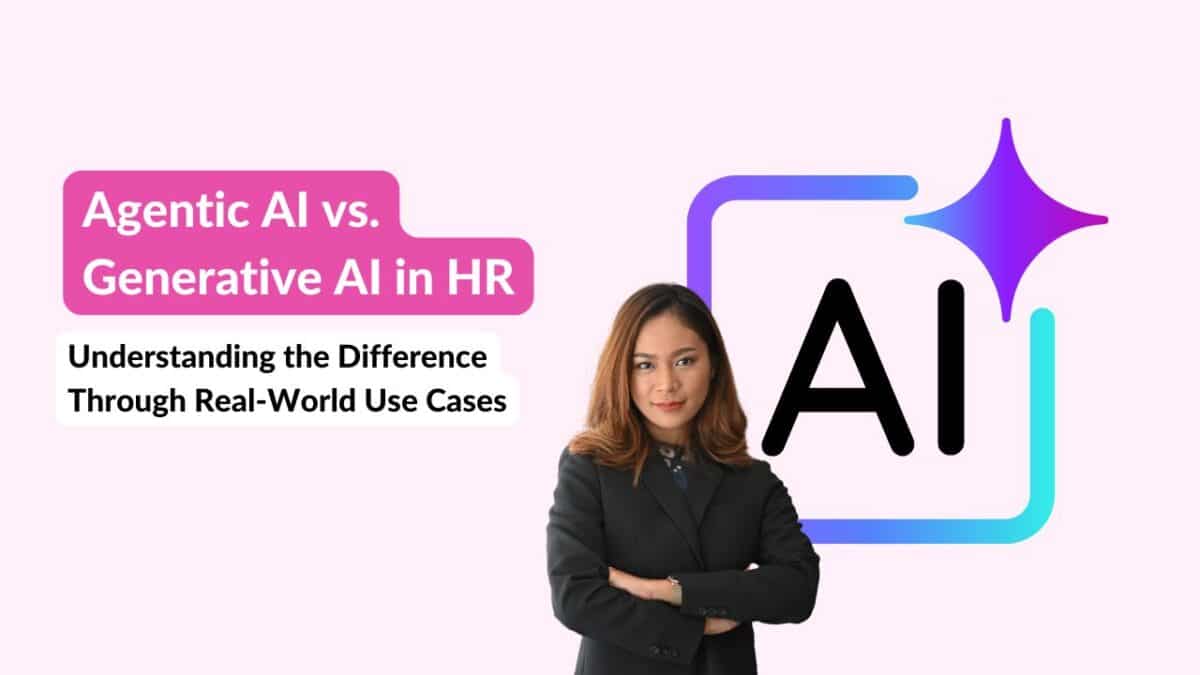What if you could predict which employees are about to leave—before they even say a word?
This isn’t a futuristic fantasy. It’s the new reality of human resources, powered by artificial intelligence.
AI is no longer a tool to simply enhance HR—it’s transforming it from a reactive function into a proactive, strategic force. As remote work becomes the norm, skills become more fluid, and the war for talent intensifies, HR leaders are turning to AI not just to keep up—but to stay ahead.
And they’re moving fast:
- 92% of organizations plan to increase AI investments within the next three years.
- Nearly 70% already use AI to guide key HR decisions.
- 65% of employees are open to AI-powered coworkers.
Why? Because the return on investment is undeniable. AI helps companies:
- Reduce recruitment costs by up to 30%
- Cut time-to-hire by 81%
- Forecast turnover with 87–90% accuracy
Across core functions—from recruitment and onboarding to performance management and DEI—AI is delivering real-time insights, automating administrative tasks, and enabling truly personalized employee experiences.
In this article, we’ll explore how AI is revolutionizing nine essential HR functions and share 15 real-world use cases that show what the future of HR looks like in 2025 and beyond.
Market Insights on the Increasing Impact of AI on HR Functions
Gartner reports that 76% of HR professionals believe that failing to use AI solutions within the next one to two years will make their organizations less successful.
HR leaders are implementing AI solutions to streamline their HR processes and to keep their people operations competitive.
- Almost 70% of companies are already utilizing AI to inform their HR decisions, according to the Harvard Business Review. Here are some reasons:
- AI-based HR analytics predict workforce trends with 90% accuracy, and predictive AI can forecast staff turnover with 87% accuracy.
- 44% of businesses utilize AI to optimize recruitment and talent acquisition. It has been observed that AI hiring tools can also cut recruitment costs by 30%.
- 80% of enterprises utilize AI in human resource management to support workforce planning, while 70% of employees have access to AI to personalize learning opportunities within their organizations.
The returns on investment are evident; AI in HR accelerates hiring, provides deeper insights and enhanced engagement with candidates, and reduces operational costs. These insights are some reasons why AI in HR has become a strategic imperative. Discover how Engagedly’s AI powered platform streamlines HR processes, elevates performance outcomes, and enhances every stage of the employee lifecycle.
Below are the real use cases of AI in HR that demonstrate what HR teams will look like in 2025 and beyond:
1. People Analytics: Forecast attrition and enhance engagement
People analytics powered by artificial intelligence is changing the way HR professionals predict staff behavior. While measuring attendance, performance data, and survey feedback, AI can accurately predict attrition rates and engagement.
HR teams leverage these insights to be proactive, whether it’s retaining top performers or placating department-specific morale issues.
2. Talent Acquisition and Quality: Smarter Sourcing
Artificial intelligence in hiring automates the process of reviewing resumes, matching candidates’ profiles to job descriptions, and even predicting cultural fit based on previous hires.
Despite being focused on performance and engagement, Engagedly also includes applicant tracking (ATS) capabilities and role-based hiring analytics. These realizations enable hiring managers to predict who will be a better fit and create a strategy for sourcing those candidates faster and more effectively.
3. Onboarding: AI-Powered Workflows / Customization
Onboarding AI automation documents, workflows, schedules, and specific tasks and customizes learning plans for new hires.
Software and tools enable HR managers to assign custom onboarding tasks, track progress, and deliver AI-curated microlearning recommendations by role and department through its onboarding modules.
4. Learning & Development: Skills Gap Analysis
AI customizes training modules to address employees’ specific skill gaps, job roles, and learning preferences, continually evolving as employees develop and learn.
AI in HR facilitates effective learning and upskilling. For instance, the learning and up-skilling solution from Engagedly integrates an AI-driven recommendation engine and employee performance data to bring personalized learning paths. It automatically recommends courses to fill skill gaps (especially for internal transfers and grooming leaders).
Yearly appraisal and performance management sessions have been replaced by real-time progress tracking. Thanks to AI, continuous feedback, red flags for underperformance, and goal tracking are now delivered on a personalized level.
Here is where tools like Engagedly come into play. Marissa AI, their lead AI assistant, provides predictive performance insights, offers timely feedback, and intelligently automates the creation of SMART goals. Managers can eliminate the guesswork and make more informed evaluations based on data. See how Engagedly brings AI into core people operations to simplify workflows, support data informed decisions, and optimize talent management.
6. Talent Management: Career Mapping and Leadership Identification
By assessing employee skills, trends, and aspirations, AI suggests potential career routes and leadership opportunities that are aligned with individual talents and goals. This not only encourages succession planning, but also keeps employees motivated.
Engagedly’s Agentic AI for Talent Management detects emerging engineers by monitoring the development of skills and project contributions. It augments HR roles with defined leadership readiness scores and recommendations on either mentorship or lateral movement.
7. Employee Relations: Chats and Email Sentiment Analysis
AI in HR makes sentiment analysis easier, allowing management to monitor workplace communication (with privacy controls) and detect indicators of unhappiness, stress, or disengagement. It allows HR to respond before there is a problem.
By analyzing tone and emotion in internal messages and survey comments, HR can gain insights into how their employees feel, particularly in hybrid work environments. This increases employee retention and well-being efforts.
8. Data-Driven Decision-Making
AI in Human Resource Management enables decisions based on patterns rather than guesswork. Whether that’s making a call on how to adjust compensation or running a well-being initiative, AI works on facts and delivers realistic and applicable solutions.
All the data can be converted into the right kind of information and action with tools like analytics dashboards. HR teams are no longer dependent on the monthly reports as they can now react to live trends.
AI can eliminate bias from hiring and performance evaluations, looking purely at competency-based data. It maintains fairness in processes like recruiting, skill development, and succession planning.
While algorithms are properly audited, AI-powered DEI tools are helping brands toward inclusive cultures. Employee performance systems help avoid subjective feedback and drive metric-based recommendations for all employees.
15 Ways in Which AI is Shaping the Future of HR in 2025
Here are 15 real-world examples of AI’s impact on human resources today:
1. Retention Forecasting: Machine Learning Models
Machine learning in AI mines past patterns to predict future employee behaviors (including resignations).
HR pros use these models to spot risks early on and analyze performance dips, tenure length, feedback sentiment, and absenteeism.
Utilizing retention models drives timely managerial intervention. For instance, Accenture reduced attrition by 20% by implementing personalized career pathways and offering mentorship and upskilling opportunities.
2. AI-Powered Resume Screening
Resume screening is set up with algorithms that classify and rank keywords, phrases, and patterns in resumes based on thousands of hiring decisions.
Recruiters can save time by allowing AI to shortlist the most relevant candidates by context, and not just by keywords.
Some tools have helped companies reduce 30% cost-per-hire and 81% time-to-hire through AI recruitment augmentation.
3. NLP Solutions: Interview and Surveys
NLP processes help identify insights and sentiments and understand intent.
AI can decrypt open-ended responses in employee surveys or video interviews, showcasing hidden problems or strengths.
Several organizations use NLP to evaluate candidates’ qualitative answers, which in turn assist hiring managers in determining a better cultural fit.
4. Behavioral Data from IoT Devices
HR can leverage massive amounts of real-time behavioral data to:
- Implement safer office policies and practices (or remote work guidelines).
- Enhance employee experience and comfort
- Monitor workforce movement and collaboration patterns
- Support employee well-being
- Automate facility operations
5. Predictive Analytics for Workforce Planning
AI-powered predictive analysis helps in assessing future staffing needs, budget planning, and talent gaps.
Leaders can plan for future skill gaps, promotions, and hiring needs years in advance. Multinationals utilize predictive workforce planning to forecast leadership succession and optimize training investments.
6. AI in HR for Learning Material and Feedback Generation
Generative AI helps in scripting personalized content like training modules, quizzes, or developmental feedback for employee training and development.
HR’s L&D can customize learning programs in real-time for specific roles or to address performance gaps.
Internal tools can develop training data, which cuts development cycles in half.
AI in human resource management helps in tracking compliance by scanning legal documents and internal records to find non-compliant behaviors.
It can flag early signs of harassment, labor law violations, or data misuse.
Big businesses rely on these compliance bots to ensure GDPR, WCAG, and OSHA compliance while reducing the need for manual audits.
8. AI for Auditing and Risk Monitoring
AI in HR systems helps detect and remove anomalies that may indicate fraud or policy violations.
HR departments gain real-time audit trails and early fraud alerts by detecting:
- Payroll and benefits-related risks.
- Unauthorized access to employee data
- Missing documentation
- Policy violations
- Suspicious benefit claims
9. Augmented & Virtual Reality
AR/VR tech offers immersive onboarding and training simulations. HR leaders can walk remote workers through office spaces and engage them in role-play-based training.
Businesses use VR onboarding to shorten ramp-up time and boost employee satisfaction.
AI-powered dashboards compile continuous performance data to track employee progress. HR supervisors can issue feedback in real time through visual performance snapshots.
For instance, Engagedly’s Marissa AI reduces review bias and increases feedback frequency.
11. Sentiment Analysis of Employee Feedback
AI reads emotional tones from survey results, chats, and intranet posts. It detects disengagement or tension before problems escalate.
Tools enable quicker problem-solving and instant feedback by analyzing:
- Tone, voice, and word choices
- Sentiment polarity
- Emotional intensity
- Trends across departments
AI creates and tracks SMART goals (specific, measurable, achievable, relevant, time-bound), which become more responsive and adaptive, thus boosting ownership.
For instance, performance systems alert employees regarding their missed targets and offer automated next steps.
13. HR Chatbots and Voice Assistants
AI bots can now instantly answer HR-related queries (benefits, leave, policy) in real time.
Such measures free HR leaders from repetitive queries and further enhance response time. Moreover, their 24/7 availability, quick responses, information on leave policies, benefits eligibility, pay slip downloads, company holidays, and FAQs improve performance and resolve queries instantly.
14. Personalized Employee Journeys
AI in HR designs custom career paths, learning tracks, and team placements.
This strategy aligns personal employee goals with business needs. For instance, Engagedly’s Agentic AI for Talent Management recommends mentors, promotions, or role changes based on live employee data.
15. Automation of Administrative HR Tasks
AI automates routine tasks like leave approvals, payroll, and offboarding.
This reduces manual bottlenecks and error rates. For instance, AI in HR helps with payroll integration and exit task automation, which can save companies thousands of hours in HR every year.
Final Words
AI in HR has liberated HR teams. HR leaders are now strategic enablers. The future HR function is data-led, people-focused, and insight-powered.
Automated tools like Marissa AI and Agentic AI minimize low-complexity tasks while enabling intelligent, contextual decisions. These tools assist human intelligence rather than replacing it.
Explore Engagedly’s AI-driven HR software suite and drive HR operations in a more interconnected, intelligent, and continuous way. We not only help you streamline HR processes; we empower your teams to make faster, fairer, and more impactful people decisions at scale.
FAQs
1. What are the top AI in HR trends that are revolutionizing operations in 2025?
Key AI trends in HR include hyper-personalization, the use of ethical AI in hiring, and the implementation of explainable AI for increased transparency. Responsible AI governance is also essential.
2. Will AI replace HR professionals?
No. AI is designed to augment, not replace, human roles. It automates repetitive tasks, delivers data-driven insights, and enhances decision-making—but human judgment, empathy, and relationship-building remain irreplaceable in HR.
3. Is AI in HR only for large enterprises?
Not at all. Small and mid-sized businesses are adopting AI tools too—especially in recruitment, onboarding, and performance management—because many modern HR platforms offer scalable, affordable AI-powered solutions.
4. How can AI help reduce hiring bias?
AI can anonymize resumes, focus on skills over background, and ensure consistent evaluation across candidates. However, ethical AI requires regular auditing to avoid amplifying existing biases in the data it’s trained on.
5. What HR tasks can be automated with AI?
Common tasks include:
- Resume screening
- Interview scheduling
- Leave approvals
- Payroll processing
- Onboarding workflows
- Employee surveys
- Generating SMART goals
- Performance tracking
6. How does AI improve employee engagement?
AI tools monitor sentiment in chats, emails, and surveys to detect early signs of disengagement. They also personalize learning, career development, and goal-setting, helping employees feel more supported and valued.
7. What are the risks of using AI in HR?
Risks include:
- Bias in algorithms if not carefully managed
- Data privacy concerns
- Over-reliance on automation without human oversight
- Employee mistrust if AI use is not transparent
Mitigation starts with responsible AI governance and transparent communication.
8. How does AI personalize learning and development?
AI analyzes an employee’s performance, role, goals, and skill gaps to recommend customized learning paths. It adapts over time, delivering content that grows with the employee’s career trajectory.
Gabby Davis
Gabby Davis is the Lead Trainer for the US Division of the Customer Experience Team. She develops and implements processes and collaterals related to the client onboarding experience and guides clients across all tiers through the initial implementation of Engagedly as well as Mentoring Complete. She is passionate about delivering stellar client experiences and ensuring high adoption rates of the Engagedly product through engaging and impactful training and onboarding.






